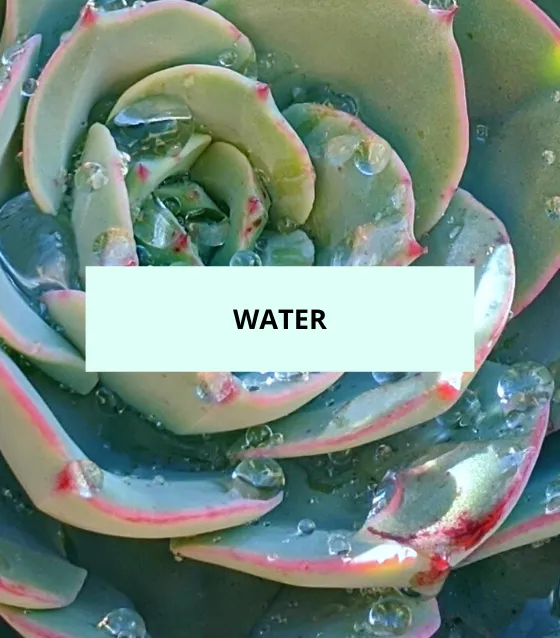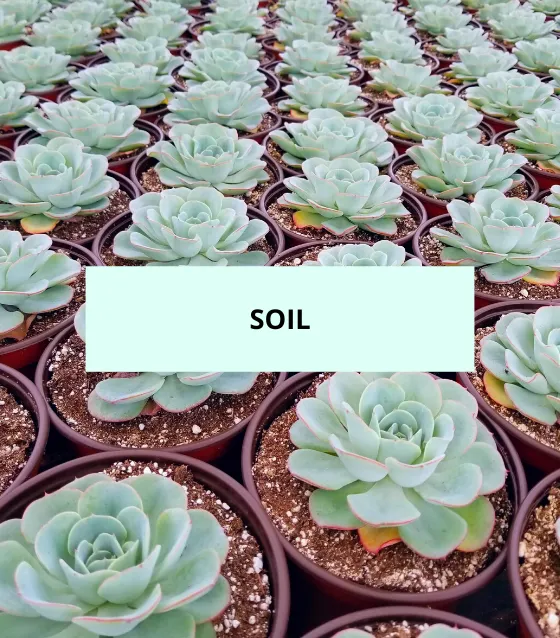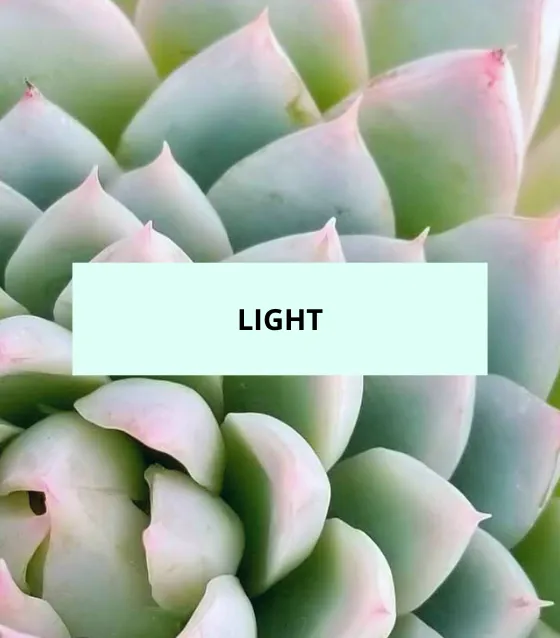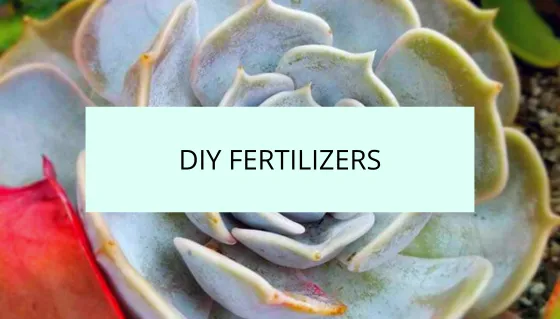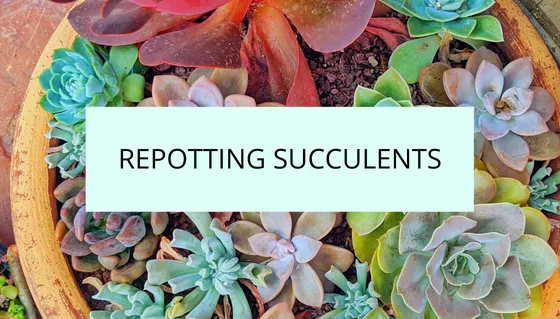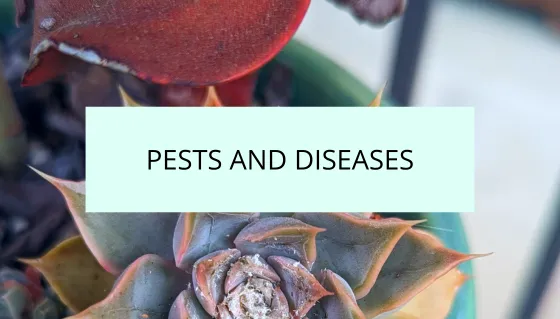Echeveria Compton Carousel is a stunning succulent that can add beauty to any succulent collection. In this article, we will explore the key characteristics of Echeveria Compton Carousel so you can enjoy this beauty!
Dig in!
Appearance and Growth
Echeveria Compton Carousel forms compact rosettes with blue-gray leaves adorned with cream-colored edges and a hint of pink on older leaves. These rosettes can expand to a striking 8-inch diameter, making them visually captivating. Over time, this succulent produces offsets, allowing it to form clusters.
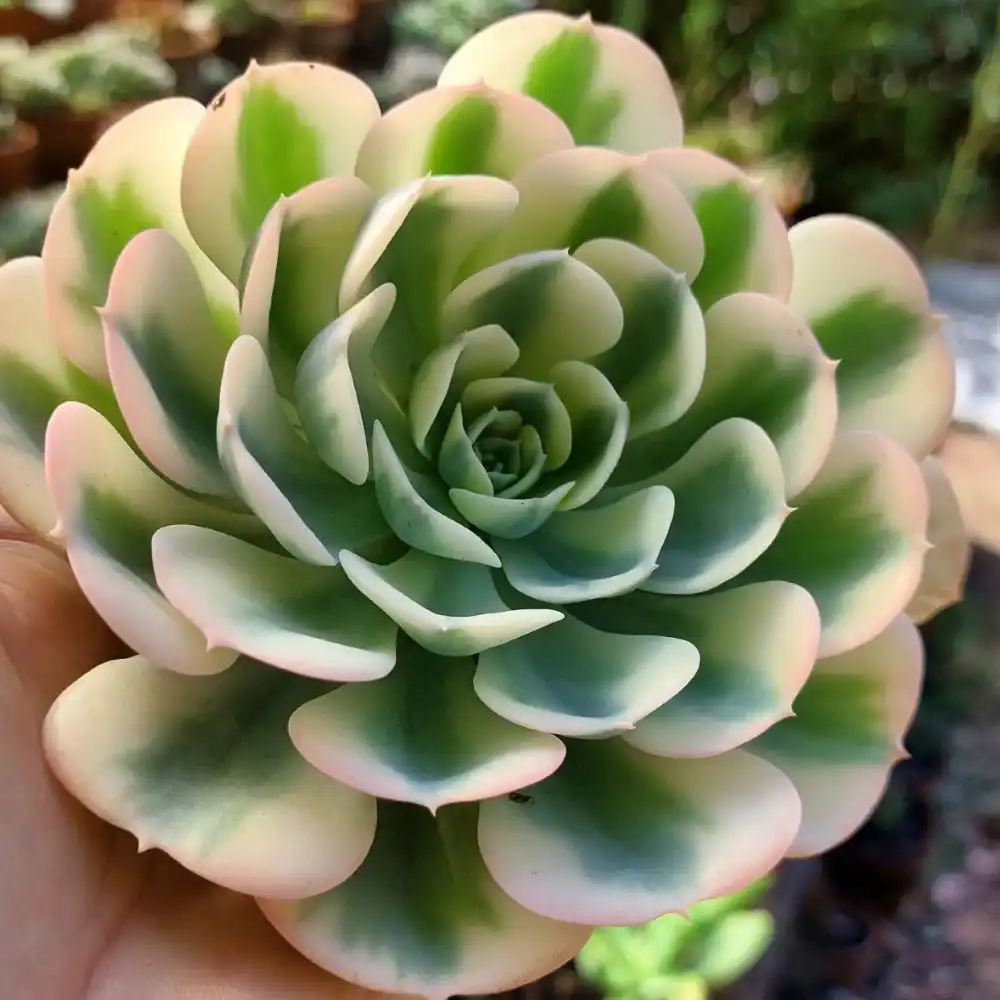
Flower Color and Blooming
Echeveria Compton Carousel produces striking red flowers with yellow tips on long inflorescences that can grow up to 1 foot in length. The flowers rise vertically and gracefully arch over, adding an elegant touch to the plant. While the exact blooming period may vary, it typically occurs during spring.
Soil and Potting
Well-draining soil is crucial for the health of Echeveria ‘Compton Carousel’. A mixture of succulent or cactus potting mix, perlite, and coarse sand will ensure proper drainage and aeration for the roots. When potting the succulent, choose a container with drainage holes to prevent waterlogging. This will help prevent root rot and maintain the overall health of the plant.
Fertilization
Echeveria ‘Compton Carousel’ benefits from occasional fertilization during the active growing season. Use a balanced, water-soluble fertilizer specifically formulated for succulents, following the manufacturer’s instructions. Apply the fertilizer sparingly, as succulents are sensitive to over-fertilization. Over-fertilization can lead to weak growth and may even cause damage to the plant.

Succulent fertilizer available to purchase on Etsy.
Non-Toxicity
Here’s good news for pet owners and succulent enthusiasts it is safe for cats, dogs, and humans. You can enjoy the beauty of this succulent without worrying about any harmful effects on your loved ones.
Echeveria Compton Carousel Propagation Methods
If you want to expand your Echeveria Compton Carousel collection or share it with others, there are a few propagation methods you can try:
Offsets
Echeveria Compton Carousel produces offsets, also known as “pups,” which can be separated from the parent plant and grown as individual plants. Wait until the offsets are about 2 inches in diameter before separating them from the main plant.
Leaf Cuttings
Another way to propagate Echeveria Compton Carousel is through leaf cuttings. Carefully remove a healthy leaf from the stem, making sure not to damage it. Let the leaf callous over for a few days, then place it on top of well-draining soil. Keep the soil lightly moist and provide indirect light. Roots will develop, followed by the growth of new plants.
When you’re rooting or transplanting your succulents and cacti, use SUPERthrive to help reduce the chance of transplant shock and grow a strong root system.


